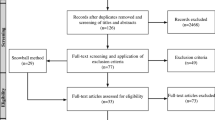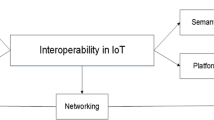Abstract
Our daily lives are expected to change dramatically due to the popularity of ubiquitous computing technologies. These will make it possible to integrate various aspects of our lives. However, a new approach is required to seamlessly deal with devices embedded in our environments. Future embedded systems will embody a new approach that will take into account a variety of new issues, for example, spontaneous interaction, personalization, privacy protection, and interoperability. In this paper, we propose a personal home server that will make it possible to coordinate home appliances. Since everyone will have a different personal home server, it will allow us to personalize how the appliances are used according to individual preferences. Our personal home server can seamlessly discover and configure appliances at any locations, such as at railroad stations, cars, and streets as well as houses. We also discuss its design and implementation and present its current status.




Similar content being viewed by others
References
Barfield W, Caudell T (2001) Fundamentals of wearable computers and augmented reality. Lawrence Erlbaum Associates, NJ
Dahlberg P, Sanneblad J (2000) DeskPanel: a proximity-based information panel for locally mobile staff. In: Proceedings of the NordiCHI 2000
Foster I, Kesselman C, Nick JM, Tuecke S (2002) The physiology of the grid, http://www.globus.orf/research/papers/ogsa.pdf
Gellersen H-W, Schmidt A, Beigl M (2000) Adding some smartness to devices and everyday things. In: Proceedings of third workshop on mobile computing system and applications 2000, Monterey
Harter A, Hopper A, Steggles P, Ward A, Webster P (1999) The anatomy of a context-aware application. In: Proceedings of fifth annual ACM/IEEE international conference on mobile computing and networking (MOBICOM’99), ACM Press, New York, pp 59–68
Holmquist LE, Mattern F, Schiele B, Alahuhta P, Beigl M, Gellersen HW (2001) Smart-its friends: a technique for users to easily establish connections between smart artefacts. In: Proceedings of the UBICOMP 2001, LNCS, vol 2201. Springer, Berlin, pp 116–211
Horn P (2001) Autonomic computing, IBM Manifesto, http://www.research.ibm.com/autonomic/manaifesto/autonomic_computing.pdf
JPL: A Java Interface to Prolog, http://sourceforge.net/projects/jpl/
Nakajima T, Ueno D, Satoh I, Aizu H (2002) A virtual overlay network for integrating home appliances. In: Proceedings of second international symposium on applications and the Internet, IEEE Computer Society, NARA, pp 246–255
Nakajima T, Kobayashi N, Tokunaga E (2004) Middleware support for various input/output devices for networked audio and visual home appliances. In: Proceedings of second international symposium on ubiquitous computing systems (UCS 2004), Tokyo
Nakajima T (2003) Pervasive servers: a framework for creating a society of appliances. In: Personal and ubiquitous computing, vol 7, no 2. Springer, Berlin
Nakajima T, Fujinami K, Tokunaga E, Ishikawa H (2004) Middleware design issues for ubiquitous computing. In: The third international conference on mobile and ubiquitous multimedia
Edwards WK, Newman MW, Sedivy J, Smith T, Izadi S (2002) Challenge: recombinant computing and the speakeasy approach. In: Proceedings of the Mobicom ‘02, Atlanta
Nakajima T (2005) Personal coordination server: a system infrastructure for designing pleasurable experience. In: Proceedings of the IEEE international conference on pervasive services, 2005, Santorini
Newman M, Izadi S, Edwards K, Sedivy J, Smith T (2002) User interfaces when and where they are needed: an infrastructure for recombinant computing. In: Proceedings of 15th symposium on user interface software and technology (UIST2002). ACM Press, New York, pp 171–180
Norman DA (1998) The invisible computer: why good products can fail, the personal computer is so complex, and information appliance are the solution. MIT Press, Cambridge
Open Server Gateway Initiative, OSGi Service Platform Specification, http://www.oegi.org/
Perterson DA, et al. (2002) Recovery oriented computing (ROC): motivation, definition, techniques, and case studies. UC Berkeley, Technical Report UCB/CSD-02-1175
Ponnekanti SR, Lee B, Fox A, Hanrahan P, Winograd T (2001) ICrafter: a service framework for ubiquitous computing environments. In: Proceedings of the Ubicomp 2001, LNCS, vol 2201. Springer, Berlin, pp 56–75
Satoh I (2003) A testing framework for mobile computing software. IEEE Trans Software Eng 29(12):1112–1121
Satoh I (2004) Software testing for wireless mobile computing. IEEE Wireless Commun (IEEE Communication Society) 11(5):58–64
Want R, Pering T, Danneels G, Kumar M, Sundar M, Light J (2002) The personal server: changing the way we think about ubiquitous computing. In: Proceedings of the Ubicomp2002, LNCS, vol 2498. Springer, Berlin, pp 194–209
Weiser M (1991) The computer for the 21st century. Sci Am 265(3):94–104
Wisneski G, Ishii H et al. (1998) Ambient display: turning architecture space into an interface between people and digital information. In: Proceedings of the 1st international workshop on cooperative buildings, Darmstadt
Yamabe T, Fujinami K, Nakajima T (2004) Experiences with building sentient materials using various sensors. In: Proceedings of IEEE international workshop on smart appliances and wearable computing, IEEE Computer Society, Tokyo, pp 445–450
Author information
Authors and Affiliations
Corresponding author
Rights and permissions
About this article
Cite this article
Nakajima, T., Satoh, I. A software infrastructure for supporting spontaneous and personalized interaction in home computing environments. Pers Ubiquit Comput 10, 379–391 (2006). https://doi.org/10.1007/s00779-005-0056-1
Received:
Accepted:
Published:
Issue Date:
DOI: https://doi.org/10.1007/s00779-005-0056-1




